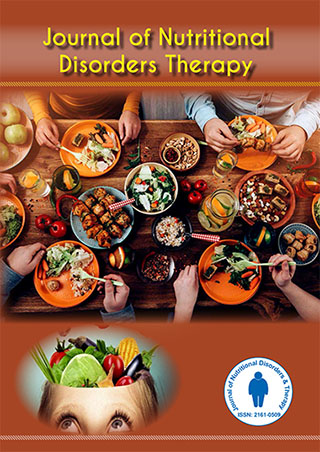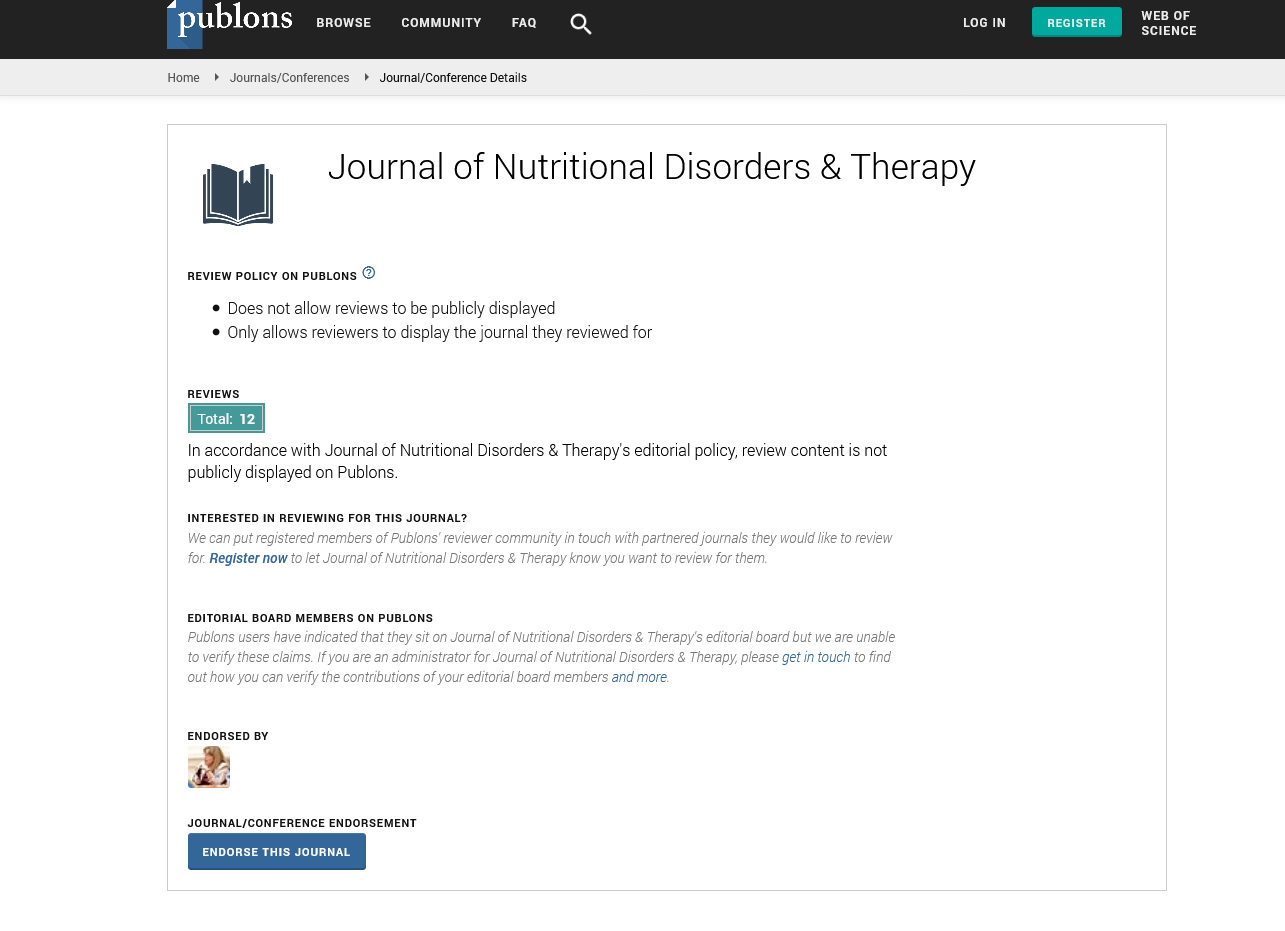Indexed In
- Open J Gate
- Genamics JournalSeek
- Academic Keys
- JournalTOCs
- Ulrich's Periodicals Directory
- RefSeek
- Hamdard University
- EBSCO A-Z
- OCLC- WorldCat
- Publons
- Geneva Foundation for Medical Education and Research
- Euro Pub
Useful Links
Share This Page
Journal Flyer

Open Access Journals
- Agri and Aquaculture
- Biochemistry
- Bioinformatics & Systems Biology
- Business & Management
- Chemistry
- Clinical Sciences
- Engineering
- Food & Nutrition
- General Science
- Genetics & Molecular Biology
- Immunology & Microbiology
- Medical Sciences
- Neuroscience & Psychology
- Nursing & Health Care
- Pharmaceutical Sciences
Opinion - (2025) Volume 15, Issue 1
Community-Based Nutritional Management of Marasmus
Mark Powrie*Received: 25-Feb-2025, Manuscript No. JNDT-25-29118; Editor assigned: 27-Feb-2025, Pre QC No. JNDT-25-29118 (PQ); Reviewed: 13-Mar-2025, QC No. JNDT-25-29118; Revised: 20-Mar-2025, Manuscript No. JNDT-25-29118 (R); Published: 27-Mar-2025, DOI: 10.35248/2161-0509.25.15.322
Description
Marasmus affects millions of children under five, especially in low-income regions facing food insecurity. Characterized by extreme weight loss, stunted growth and reduced immunity, it results from a prolonged energy deficit unalleviated by adequate nutrition. Traditional dietary rehabilitation in health facilities, featuring therapeutic milk formulas, has been effective but often constrained by cost and logistics.
Ready-to-Use Therapeutic Food (RUTF) is a ready-packed, calorie-rich paste, typically based on peanut or milk, oil, sugar and micronutrients. It offers a shelf-stable, non-perishable option that facilitates community-based treatment. This article presents an in-depth review of RUTF application in marasmus, from macronutrient requirements to real-world treatment outcomes.
Marasmus
Marasmus is characterized by severe wasting, where a child's weight-for-height falls significantly below normal standards. Affected individuals exhibit a marked loss of both subcutaneous fat and muscle mass. Unlike kwashiorkor, marasmus typically presents without edema. The immune system is often compromised, leading to frequent infections. Additionally, cognitive and motor development may be delayed due to chronic nutritional deficiencies.
The primary goal of nutritional rehabilitation in marasmus is to restore lost lean body mass and fat stores. It is essential to correct deficiencies in protein, essential fatty acids, and micronutrients. The rehabilitation plan should also support catch-up growth and facilitate immune system recovery. Moreover, efforts should be made to ensure sustained, local access to adequate nutritional support.
Treatment protocol
Children with marasmus are admitted for treatment if their weight-for-height is low and if their Mid-Upper Arm Circumference (MUAC) is less than 115 mm in the absence of edema. Nutritional management typically includes the administration of Ready-To-Use Therapeutic Food (RUTF) at a dosage of approximately 200 kcal per kilogram of body weight per day, which translates to around 150–200 grams per child daily. Feeding is usually scheduled once or twice a day depending on tolerance and clinical guidelines.
The treatment duration generally spans 6 to 8 weeks, or until the child's weight-for-height reaches at least and the MUAC improves to 125 mm or more. During this period, weekly weight measurements and monthly MUAC assessments are conducted to monitor progress. Close monitoring is also required for appetite, treatment tolerance and overall clinical condition.
For cases with complications or multiple infections, initial inpatient management is recommended. Once the child is stabilized, care transitions to a community-based phase, which is appropriate for managing uncomplicated cases of marasmus while ensuring continuity of care within the local healthcare system.
Challenges and considerations
Allergy and allergens: Peanut-based RUTF poses allergy risks; alternatives (soy, milk) exist but may be more expensive
Supply chain: Ensuring consistent availability and quality in remote areas requires strong logistics
Monitoring and supervision: Regular follow-up is necessary to track growth, screen for complications and confirm compliance
Sustainability: Long-term nutritional outcomes may rely on dietary diversification post-recovery
Post-recovery considerations
Ready-To-Use Therapeutic Food (RUTF) is primarily designed to support the acute recovery phase in children with marasmus. However, long-term health and development depend on sustained nutritional care following recovery. It is recommended that children continue breastfeeding alongside an age-
appropriate, diverse diet that includes nutrient-dense complementary foods such as legumes, vegetables and animal-source products. Nutrition education for caregivers is essential to ensure proper feeding practices at home.
Additionally, regular health check-ups and growth monitoring are vital to detect any setbacks early. Without adequate post-rehabilitation support, there is a significant risk of relapse or progression to chronic malnutrition, including stunting.
Cost and cost-effectiveness
While RUTF costs $20–$50 per child, community-based on the treatment avoids higher inpatient costs. Studies show cost per disability-adjusted life year averted is favorable compared to standard hospital care.
Marasmus remains a major health threat in many regions. RUTF offers a robust treatment approach adaptable to community settings. Its nutrient composition allows rapid recovery comparable to inpatient formulas. For sustained recovery, integration with complementary feeding strategies and health system support is essential. Continued implementation research, especially on sustainability and scale-up, will support better outcomes for children affected by severe wasting.
Citation: Powrie M (2025). Community-Based Nutritional Management of Marasmus. J Nutr Disord Ther. 15:322.
Copyright: © 2025 Powrie M. This is an open-access article distributed under the terms of the Creative Commons Attribution License, which permits unrestricted use, distribution, and reproduction in any medium, provided the original author and source are credited.

